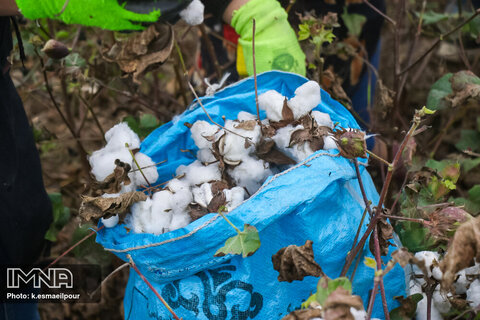Iran (IMNA) - According to the Ministry's official website, Hezarjaribi highlighted various supportive programs being implemented in Iran, such as the adoption of micro-irrigation systems, no-till farming techniques, affordable loans for purchasing harvesters, and the promotion of early-growing varieties of cotton.
He further emphasized that more than 70% of countries worldwide provide subsidies to cotton farmers, allowing them to benefit from the added value of this crucial crop.
Iran's Cotton Yield Surpasses 3,000 kg/hectare, Doubling Production in Five Years
According to an official statement, Iran has achieved a significant milestone in its cotton industry, with the average cotton yield surpassing 3,000 kg/hectare. Hezarjaribi, the spokesperson for the Ministry of Agriculture, highlighted the remarkable progress made during the country's Sixth National Development Plan, which concluded two years ago.
During this five-year period, cotton production in Iran experienced a remarkable growth, doubling in size. The raw cotton production soared from 150,000 metric tons (mt) to over 300,000 mt, reflecting a substantial increase in output. This achievement underscores Iran's commitment to enhancing its agricultural sector and promoting self-sufficiency in cotton production.
With the average cotton yield exceeding 3,000 kg/hectare, Iran's cotton farmers have demonstrated their expertise and dedication to improving crop productivity. Such remarkable progress not only strengthens the domestic cotton industry but also positions Iran as a potential exporter in the global market.



Your Comment